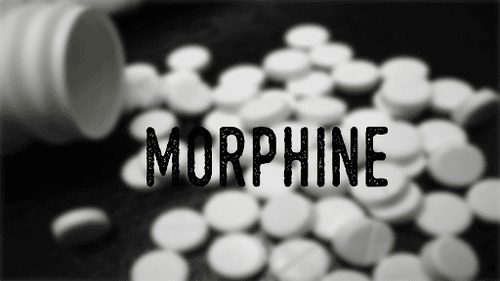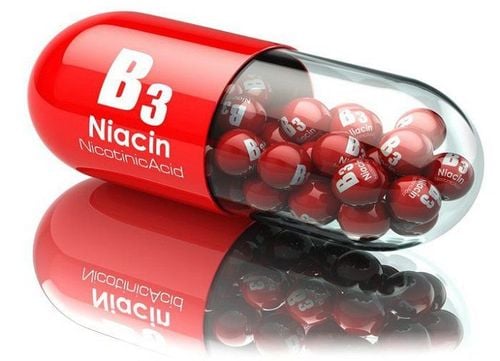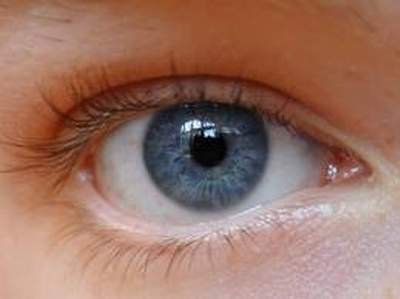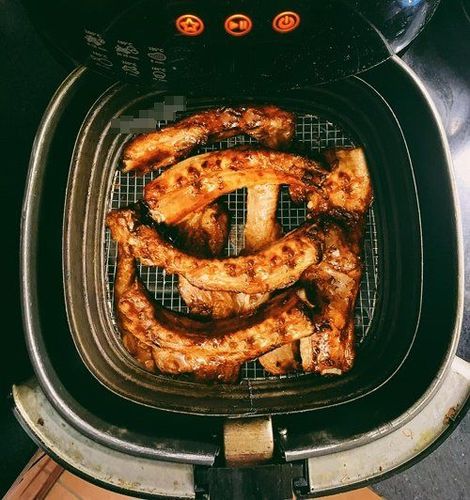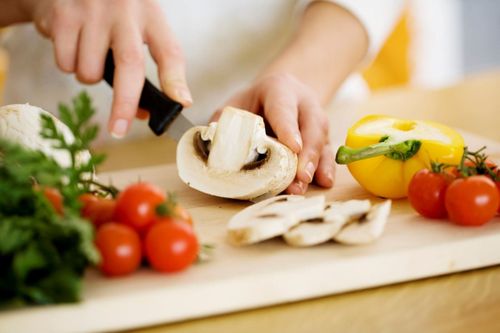This is an automatically translated article.
Nutritious food that improves body health and energy. However, the way you cook it will have a great influence on the amount of nutrients in the dish. So what is proper cooking? How will different processing methods affect the nutritional content?
1. Changes in nutrient content and vitamin loss during cooking Processing makes food easier to digest and increases nutrient absorption. For example, the protein in cooked eggs is 180% easier to digest than raw eggs. However, some cooking methods reduce important nutrients, including:
Water-soluble vitamins: Vitamin C and B vitamins - thiamine (B1), riboflavin (B2), niacin (B3), pantothenic acid (B5), pyridoxine (B6), folic acid (B9) and cobalamin (B12); Fat-soluble vitamins: Vitamins A, D, E and K; Minerals: Mainly potassium, magnesium, sodium and calcium. The amount of vitamins in a meal depends on two factors. One is the amount found naturally in foods. Two are factors such as temperature, light, oxygen, acids and alkalis that affect the stability of vitamins. The rate of vitamin loss during cooking is specifically:
Boiling: 35 - 60% Blanching: Less than boiling; Steaming: 10 - 25%; Pressure Cook: 5 - 10% Microwave: 5 - 25% Roast: 10 - 47%; Stew / braised: 10 - 12%; Bake: 10 - 12%; Fried: 7 - 10%.

Chế biến thực phẩm sai cách có thể làm mất đi giá trị dinh dưỡng của thực phẩm
2. Boiling, simmering and blanching These recipes all have in common that they all require boiling water, but differ in temperature:
Blanching: Under 180°F or 82°C; Heat over low heat: 185 - 200°F or 85 - 93°C; Boiling: 212°F or 100°C. Vegetables are generally a great source of vitamin C, but you lose a lot of this nutrient when you cook vegetables in hot water. Because vitamin C is water-soluble and heat-sensitive, it can be released from vegetables when soaked in hot water. In fact, boiling is the cooking method that reduces vitamin C the most. Broccoli, spinach, and lettuce can lose more than 50% of their vitamin C when boiled.
B vitamins are also sensitive to heat. More than 60% of thiamine, niacin and other B vitamins are lost when meat is simmered. But if you use the whole broth, you will consume 100% of the minerals and 70-90% of the B vitamins.
On the other hand, boiled fish has been shown to preserve significantly more omega-3 fatty acids content. compared to frying or roasting in the microwave. Although vitamins are lost during cooking, cooking methods that involve boiling water have very little impact on omega-3 fats.
3. Grill and Bake in the Oven These are two similar cooking methods, both using a heat source. When grilling on the griddle, the charcoal fire will act from below, whereas when baking in the oven, the heat source will come from above.
Baking is one of the most popular cooking methods because it gives great flavor to the dishes. However, up to 40% of B vitamins and minerals are lost during baking, when nutrients from the meat ooze out. Similarly, roasting or baking in the oven does not significantly affect most vitamins and minerals, with the exception of B vitamins.
In addition, there are concerns about Polycyclic Aromatic Hydrocarbons (PAHs), which have potential carcinogenic potential, formed when the meat is grilled and the fat melts on the hot griddle. But researchers have found that PAH can be reduced by 41-89% if you get rid of the fat deposits and minimize the smoke.
4. Microwave Roasting is an easy, convenient, and safe cooking method. With short cooking times and reduced heat exposure, microwaves help preserve the nutrients found in food.
Studies have even found that the microwave is the best method to maintain the antioxidant capacity of garlic and mushrooms. Meanwhile, only about 20-30% of vitamin C in green vegetables is lost when microwaved, less than most other cooking methods.

Lò vi sóng giúp bảo quản các chất dinh dưỡng có trong thực phẩm
5. Stir-fry and sauté With sauté and sauté, food is prepared in a pan, over medium to high heat, adding a small amount of oil or butter. The two techniques are quite similar, but differ in the frequency of stirring, the temperature and the cooking time. Overall, this is a healthy way to prepare food.
Cooking quickly and without water when pan-frying will help prevent loss of B vitamins. Also, adding fat from oils and butter improves absorption of plant compounds and antioxidants. One study showed that the body will absorb 6.5 times more beta carotene in sautéed carrots than in raw carrots.
In another study, blood lycopene levels increased by more than 80% when tomatoes were sautéed in olive oil instead of raw. However, sautéing has also been shown to significantly reduce the amount of vitamin C in broccoli and cabbage.
6. Frying Frying is cooking in large amounts of fat - usually oil - over high heat. Food is also often covered with a layer of powder on the outside. This is a popular way of preparing food because the animal skin or powder coating on the outside will help the food cook evenly while still being moist and soft on the inside. The fat used while frying also adds a delicious flavor to the dish.
However, not all foods are suitable for frying. Fatty fish is the best source of omega-3 fatty acids, which have many health benefits. However, these fats are very sensitive and easily lost at high temperatures. For example, fried tuna has been shown to reduce omega-3 content by up to 70-85%, while grilling causes only minimal loss.
On the contrary, frying will preserve vitamins C and B, and also increase the amount of fiber in potatoes by converting starch into resistant starch.
When oil is heated to high temperatures for a long time, toxic substances aldehydes form, which have been linked to an increased risk of cancer and other diseases. The type of oil, temperature and cooking time will affect the amount of aldehyde produced. Heating oil also increases aldehyde formation.
Thus, it should not be overcooked if you want to fry food, and should use good, healthy frying oils.
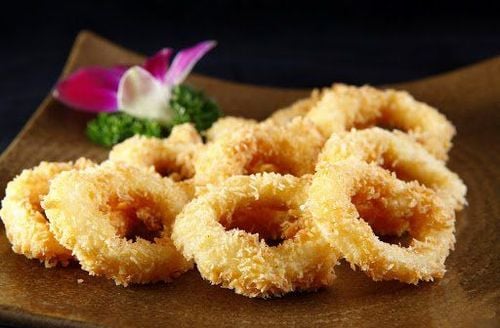
Thực phẩm được chiên rán ở nhiệt độ cao giúp tăng thêm hương vị
7. Steaming Steaming is one of the best cooking methods for preserving nutrients, including water-soluble vitamins - which are sensitive to heat and water. Researchers have found that steaming broccoli, spinach and lettuce only reduces vitamin C content by 9-15%.
The downside of this cooking method is that it has a bland taste. However, you can fix it by adding some seasoning and oil or butter after cooking.
8. Tips to preserve nutrients and avoid vitamin loss while cooking Here are some tips to limit nutrient loss and vitamin loss during cooking:
Use as little water as possible when blanching. or boiled; Use broth after boiling vegetables or simmering meat, stewing bones; Eat all cooked vegetables within 1-2 days, as vitamin C levels can continue to decrease when cooked foods are exposed to air; If possible, cut food after cooking, rather than preheating as usual, or cut into large pieces. When unprocessed food is cooked, exposure to heat and water is reduced; Similarly, do not peel vegetables before cooking, preferably with the skin on to maximize fiber and nutrient density; Boil vegetables only for a few minutes. When cooking meat, poultry, and fish, cook for the shortest time, just enough; Do not stir too much while boiling; Do not use baking soda when boiling vegetables. Although it helps to maintain the natural color of vegetables, vitamin C is lost in the alkaline environment created by baking soda.
Although cooking and cooking food improves digestion and absorption of more nutrients, it can reduce levels of some vitamins and minerals. There is no perfect way to cook, to ensure that all nutrients are retained. In general, cooking for a short time with low heat and minimal amount of water, just enough to cook, will maximize the quality of the meal.
Please dial HOTLINE for more information or register for an appointment HERE. Download MyVinmec app to make appointments faster and to manage your bookings easily.
Reference source: healthline.com; nestleprofessional.us



